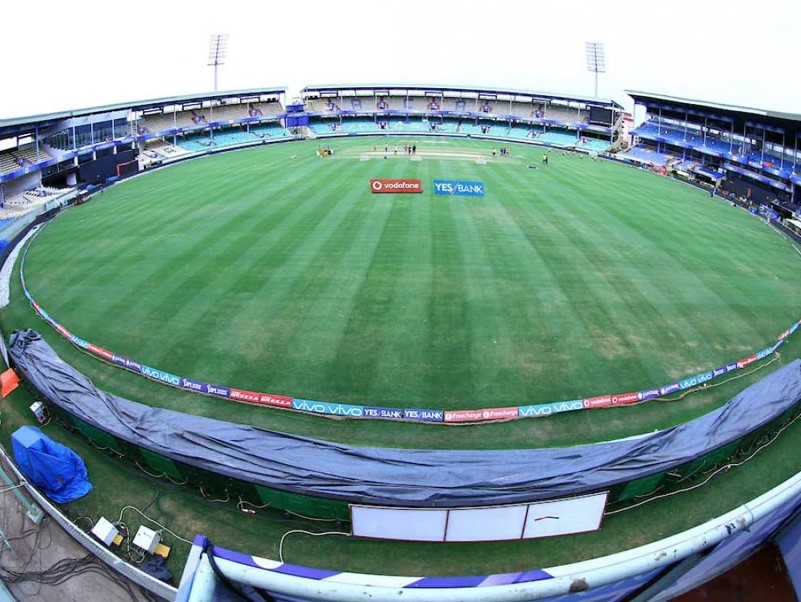ACA-VDCA: The ACA–VDCA Cricket Stadium, officially known as the Dr. Y.S. Rajasekhara Reddy ACA–VDCA Cricket Stadium, is located in Visakhapatnam, Andhra Pradesh, India. Known for its scenic backdrop and modern infrastructure, the stadium has become a favorite venue for international and domestic cricket. One of the often-discussed topics among fans, players, and commentators is the boundary length of the ground. In cricket, boundary size can significantly influence the outcome of a match, particularly in limited-overs formats.
ACA-VDCA: This article dives deep into the boundary dimensions of ACA–VDCA Stadium, how it compares with other Indian stadiums, and the impact it has on gameplay.
Basic Details of ACA–VDCA Cricket Stadium
| Feature | Details |
|---|---|
| Location | Visakhapatnam, Andhra Pradesh |
| Established | 2003 |
| Seating Capacity | Approx. 27,500 |
| Owner/Operator | Andhra Cricket Association (ACA) |
| Ends | DV Subba Reddy End, Vizzy End |
| First International Match | ODI – 2005 (India vs Pakistan) |
| Floodlights | Yes |
| Surface | Grassy with a mix of black and red soil |
Boundary Dimensions of ACA–VDCA Stadium
| Direction | Approximate Length (in meters) |
|---|---|
| Straight (longest) | 70 – 75 m |
| Square boundaries | 63 – 67 m |
| Fine leg/Third man | 58 – 61 m |
| Long on/Long off | 65 – 70 m |
ACA-VDCA: It is considered a medium-sized ground by international standards, with boundary lengths that can favor both batsmen and bowlers depending on pitch conditions and weather.
Comparison With Other Indian Stadiums
ACA-VDCA: To understand where ACA–VDCA stands in terms of boundary size, here’s a quick comparison with a few prominent Indian stadiums:
| Stadium | Straight (m) | Square (m) | Notes |
|---|---|---|---|
| Wankhede Stadium, Mumbai | 68 | 63 | Short square boundaries |
| Eden Gardens, Kolkata | 76 | 66 | Larger ground |
| M. Chinnaswamy, Bengaluru | 65 | 59 | High-scoring, short boundaries |
| Narendra Modi Stadium, Ahmedabad | 75 | 70 | Among largest in the world |
| ACA–VDCA, Visakhapatnam | 70 | 64 | Balanced ground dimensions |
Influence on Match Strategies
1. Batting Strategy
ACA-VDCA: The moderate boundary lengths allow aggressive batsmen to go over the top, especially down the ground. However, due to slightly longer square boundaries, players need to time their square shots better compared to Chinnaswamy or Wankhede.
- Players like Rohit Sharma and David Warner have succeeded here by using the full depth of the crease.
- Big-hitters tend to favor this stadium during the death overs due to the favorable straight boundaries.
2. Bowling Strategy
- Left-arm spinners and wrist spinners have had success here due to larger leg-side boundaries.
- Fast bowlers rely on cutters and cross-seam deliveries to take advantage of the pitch’s natural grip.
Notable Matches and Boundary Impact
India vs Sri Lanka, 2017 (ODI)
ACA-VDCA: India chased down a target of 216 with ease. Shikhar Dhawan’s aggressive strokeplay showed how the ground’s dimensions reward well-placed lofted shots. The straight boundaries came into play multiple times during his innings.
India vs South Africa, 2019 (Test)
ACA-VDCA: On a pitch that turned and offered bounce, spinners Ravichandran Ashwin and Ravindra Jadeja dominated, with the square boundaries limiting the ability of South African batsmen to sweep or cut freely.
Role in T20 Cricket
In the T20 format, boundary length becomes even more critical due to the explosive nature of batting. ACA–VDCA is considered a batting-friendly pitch in T20s, but not excessively so, thanks to its boundary dimensions.
| T20I Match | Average 1st Innings Score | Result Influence |
|---|---|---|
| IND vs WI (2019) | 170+ | High scoring; boundaries cleared with ease |
| IND vs AUS (2022) | 150+ | Even contest; long boundaries created pressure |
Influence of Wind and Conditions
An often overlooked factor is sea breeze and wind direction, given the stadium’s proximity to the Bay of Bengal. This affects boundary hitting in a few key ways:
- Batsmen tend to target the end with wind assistance for sixes.
- Bowlers use cross-breeze to move the ball off the surface, especially under lights.
- Due to dew, the outfield becomes faster in night matches, reducing boundary resistance.
Technological Enhancements and Modern Layout
Modern cricket requires flexible boundary layouts for different formats. ACA–VDCA has incorporated movable boundary ropes, allowing curators to adjust the field based on:
- Pitch position (center/stump-line based)
- Match format (Test/ODI/T20)
- Safety considerations (advertising boards, camera setup)
The ACA–VDCA Cricket Stadium is a well-balanced venue when it comes to boundary lengths. Neither too small to create one-sided contests nor too large to stifle aggressive play, it offers a fair battleground for both batsmen and bowlers. The straight boundaries, averaging around 70–75 meters, are often targeted by power-hitters, while the square dimensions reward tactical bowling and clever shot-making.
As cricket evolves and more attention is paid to metrics like batting strike rates, fielding efficiency, and run-saving perimeters, the boundary lengths of stadiums like ACA–VDCA will continue to play a key role in how teams prepare and execute their game plans.
Whether you’re a fan planning a visit or a cricket analyst studying venue stats, understanding the boundary architecture of ACA–VDCA gives you a deeper appreciation for the game played there.


